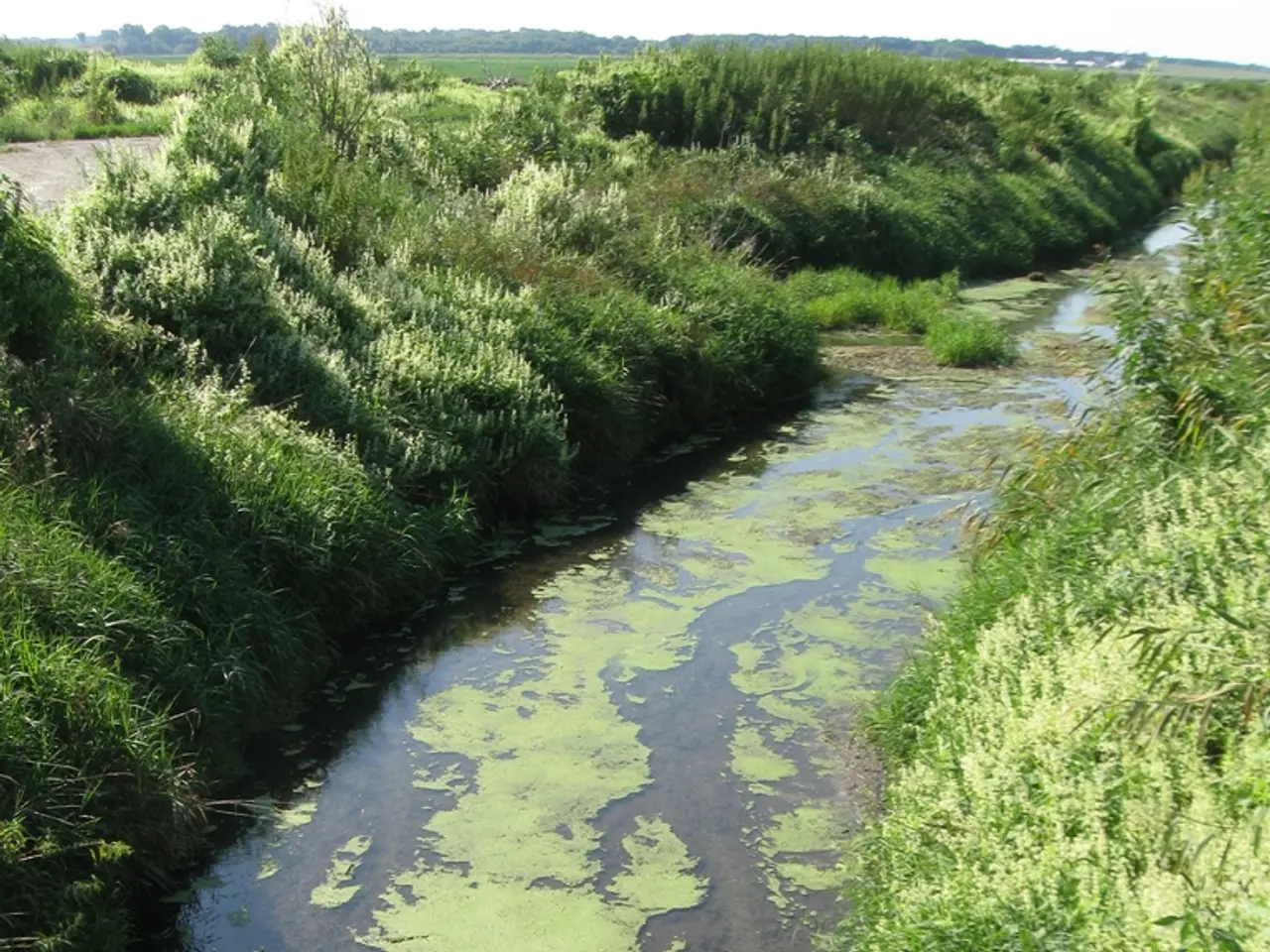Developing Sustainable Education by merging Environmental Awareness into STEAM Methods: A Comprehensive Strategy
In the realm of education, a fresh approach is taking root: environmental education within the STEAM (Science, Technology, Engineering, Arts, and Mathematics) framework. This innovative strategy emphasizes sustainability, collaboration, and real-world problem-solving, transforming the way students learn and engage with the environment.
One captivating example is the Community Garden and Weather Lab Project. This cross-grade initiative brings students of all ages together, collaboratively planting and maintaining a garden while older students install weather sensors and analyze environmental data. Younger students contribute by observing, journaling, and creating garden-themed art. This project seamlessly integrates plant biology, environmental science, data collection, botanical art, and engineering skills, fostering mentorship and teamwork while addressing sustainability locally.
Another engaging initiative is the School-wide Recycling and Upcycling Program. Students design and manage recycling systems, while technology classes track waste data and art classes create murals or sculptures with upcycled materials. This project engages students in environmental stewardship and creative expression simultaneously, teaching measurement, engineering design, and environmental science in a collaborative setting.
Secondary school students are also getting involved, building functional models of solar panels and wind turbines using recycled materials as part of STEAM Project-Based Learning (PBL) in Renewable Energy. This hands-on approach integrates scientific accuracy and aesthetic design, enabling students to iterate prototypes collectively and deepen their understanding of renewable energy systems while practicing design thinking and teamwork.
For younger learners, Early Childhood Nature Walks and Artistic Journaling provide a nurturing environment for developing curiosity about the environment. Incorporating music and rhythm to explore patterns connects environmental observation with mathematical and scientific concepts in a collaborative classroom setting.
Challenges in implementing environmental education in STEAM include limited funding, teacher training gaps, curriculum rigidity, and community engagement barriers. However, successful case studies, such as the Eco-Science Fair, Green Schools, Art for the Environment, and Data for Change programs, demonstrate its potential.
Digital platforms will play a pivotal role in environmental education by providing immersive learning experiences through tools like virtual reality. Arts-driven campaigns for awareness, like the Ocean Conservancy's Art Contest, effectively engage audiences in environmental issues through various artistic mediums. Technology also provides innovative solutions that enhance understanding and engagement with ecological issues, such as wildlife tracking applications and geographic information systems (GIS) software.
The future of environmental education in STEAM will be driven by technological advancements, collaboration between disciplines, and investment in teacher training and resources. Integrating the arts into environmental education enriches the learning experience by allowing students to express complex environmental issues creatively, fostering a deeper emotional connection to these topics. Art serves as a powerful medium to communicate messages about sustainability, conservation, and ecological awareness, manifesting in various forms like painting, sculpture, and performance.
Innovative eco-technology solutions, such as solar energy systems and smart waste management technologies, demonstrate how technology can address environmental challenges. The benefits of interdisciplinary learning extend beyond knowledge acquisition, including enhanced engagement, development of crucial skills, and increased retention of information. Mathematics serves as a vital tool in environmental data analysis, enabling an in-depth understanding of ecological patterns and trends. Hands-on scientific experiments foster experiential learning, enabling students to engage with environmental challenges and reinforce their understanding of environmental science.
This interdisciplinary framework empowers students to explore complex ecological challenges by leveraging knowledge across various domains. Engineering solutions for sustainable practices contribute to sustainability by developing technologies that reduce waste, enhance energy efficiency, and promote ecological balance. Science serves as a foundational pillar in environmental education within the STEAM framework, providing a scientific foundation for ecological principles and dynamics.
Arts-driven campaigns for awareness play a vital role in cultivating a culture of environmental education in STEAM. By fostering collaboration, creativity, and hands-on learning, these initiatives are not just teaching students about the environment—they're inspiring the next generation of environmental stewards.
- Integrating the Arts into environmental education enriches the learning experience, allowing students to express complex environmental issues creatively and fostering a deeper emotional connection to these topics.
- Such initiatives as the Eco-Science Fair, Green Schools, Art for the Environment, and Data for Change programs demonstrate the potential of environmental education within the STEAM framework, even with challenges like limited funding, teacher training gaps, curriculum rigidity, and community engagement barriers.
- Digital platforms, including virtual reality tools and arts-driven campaigns for awareness, effectively engage audiences in environmental issues and provide immersive learning experiences through various artistic mediums, enhancing understanding and engagement with ecological issues.
- Hands-on scientific experiments, engineering solutions for sustainable practices, and technological advancements like solar energy systems and smart waste management technologies contribute to sustainability by reducing waste, enhancing energy efficiency, and promoting ecological balance within the STEAM framework.




